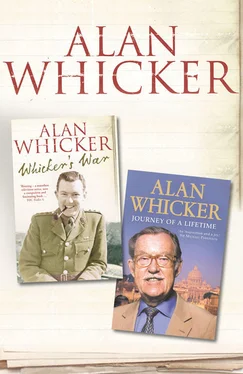Sergeant R.P. Lambert, our smallest photographer, was in an LCI heading for the beach, standing behind a tall infantryman of the Queen’s Regiment. The tense silence was broken when a soldier leaned down and whispered, ‘If that guy steps into the sea and disappears, Sarge, you ain’t half gonna get wet.’
Such a cheery routine exactly followed those morale-boosting war movies. From officers came similar flip Ealing comedy throwaways about seeing Naples and dying. These soon proved to be very bad jokes indeed.
Harry Rignold, my opposite number, had landed from an LCI and was moving across the beach when a shell burst in the sand in front of his jeep. His right hand was blown off. Sergeant Penman and their driver were also injured.
Harry walked calmly to the sea wall, carrying his camera in his remaining hand. Putting it down carefully he said, ‘I’m going to the RAP to get my arm fixed.’
He was lying on a stretcher at the regimental aid post awaiting evacuation by ship when another shell fell amid the wounded and killed that gentle and excellent man. He died without knowing he had been awarded the Military Cross.
The Italians’ coastal defence guns (made in Britain) could have done our invasion great damage – had they been manned by grown-ups …
General Montgomery landed in Reggio in an amphibious DUKW instead of his usual Humber, to be greeted by pipers of the 51 stHighland Division.
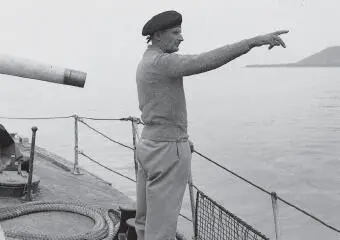
When he saw a camera Monty would always point at something, in a most commanding way.
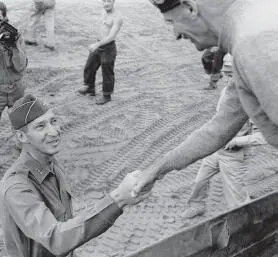
I went with him for his first meeting with General Mark Clark, whose Fifth Army had landed behind enemy lines. The beleaguered Clark welcomes Monty to his Beachhead.
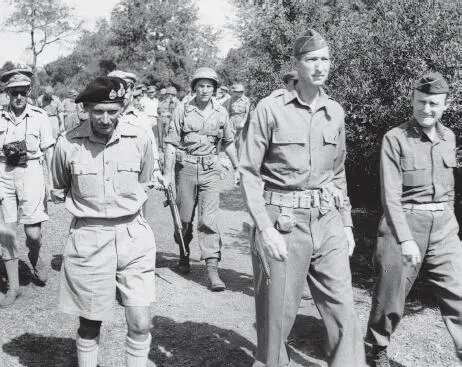
Monty goes to explain to Clark and his Chief-of-Staff Major General Gruenther how the Eighth Army will help the Fifth. (His Officer-in-Attendance is the regulation two paces behind).
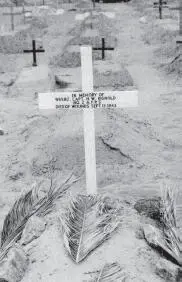
The Americans did not receive the usual Liberation-welcome in Naples, where the population was still stunned by bombing and German destruction.
My opposite number in AFPU, the brave and gentle Captain Harry Rignold, was killed during the landing on Salerno beach.

For months the German positions holding up our advance around Monte Cassino resisted all Allied attacks …
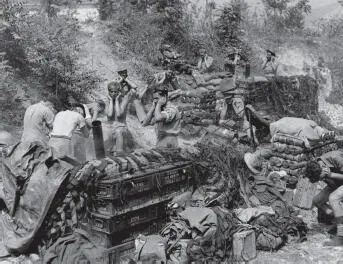
… despite powerful support by artillery, from 4.2” mortars, and up…
… and by Sherman Tanks …

… so finally 239 Flying Fortresses flew in to destroy the Benedictine Monastery which had stood amid the wild peaks of the Abruzzi for 1,400 years.
Some of the 453½ tons of bombs that fell on Cassino in the first aerial attack.
The ancient citadel of art and learning, after the bombing.
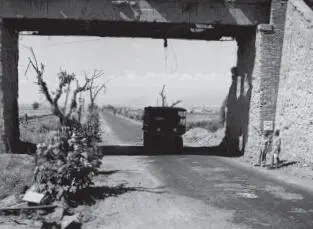
After our triumphant assault landing at Anzio, this was as close to Rome as we got for almost five months: the Flyover. Later, when the Germans launched three major attacks to throw us back into the sea, this was as far as they got.

Infantrymen under attack in the wadis. Even a small ditch seemed secure and reassuring.
A German view of the battle, as they occupied their side of the Flyover.
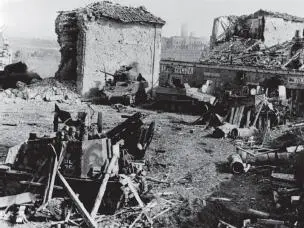
An enemy 15cm armoured Infantry Howitzer in firing position amid the ruins of Carroceto.
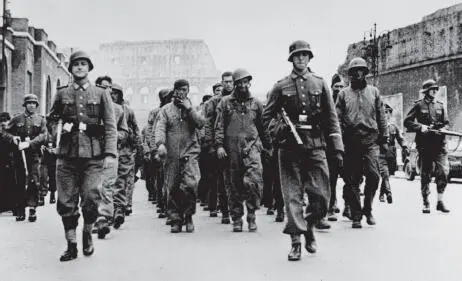
Captured American troops are marched through Rome, under armed guard.
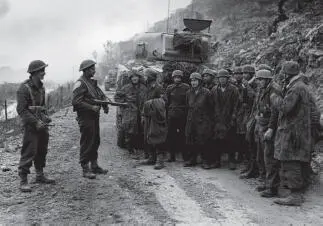
Other German soldiers are less dominant. Held at gunpoint after capture by New Zealand troops during the Battle of Cassino.
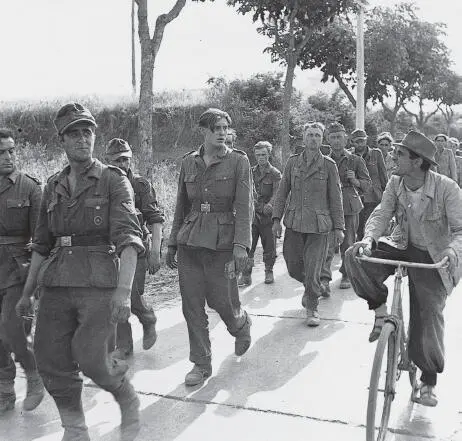
On the road to Rome an Italian cyclist voices his opinion of the German Army – by then safely disarmed and marching to the stockade.
Taking pictures in a POW camp, one face seemed to me to symbolize the end of Teutonic dreams of conquest. I called this portrait ‘The Master Race’. Next to that tragic figure, a young German POW appreciated that, for him at least, the war was over.
Along the beach Sergeant J. Huggett had also just got ashore. Ahead of him some Commandos were holding a small promontory against heavy German counter-attacks. Huggett, tall and game, set off up the hill to get pictures of the action. Near the top an angry voice ordered, ‘This way! This way!’ It was the Commando officer.
‘You took your bloody time, Sergeant,’ he shouted. ‘Where the hell are your men?’ Huggett admitted that he had come alone, to get pictures. ‘ What? ’ cried the officer, after an emotional silence, ‘I called for reinforcements, not a fucking photographer.’
One understands exactly how he felt; there are times when you just don’t want your picture taken – even though it may well be your last…
The Luftwaffe flew in close-support for Kesselring’s 15 divisions; for the first time we were outnumbered and clinging-on desperately. After two days the landing was going so badly that the Allied Commander, the American General Mark Clark, prepared plans for re-embarkation. He seemed ready to pack up and go home. His Army had only one escape route – by sea. It was unnerving to learn that our own Commander had even considered running back to the ships and sailing away.
He was eventually discouraged by tougher minds among senior American and British officers like Rear Admiral Tom Troubridge who could see that an attempted re-embarkation on beaches dominated by German artillery in the overlooking hills would be a massacre. They bullied and finally persuaded him against the possibility of retreat, but for indecisive days the Allies faced their first major defeat.
Читать дальше
